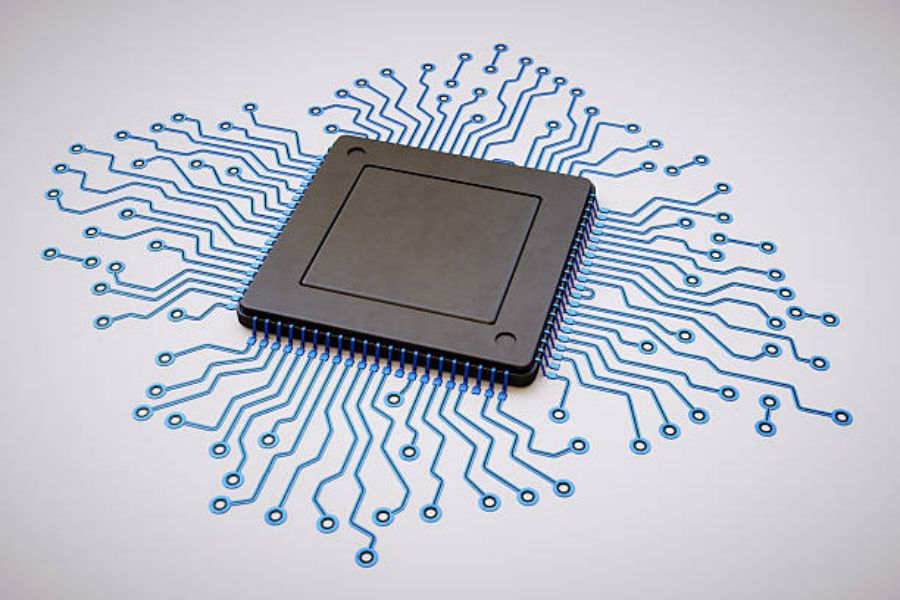Inductance is a property of a circuit's component that resists changes in the electric current passing through it. It is measured in henries. The voltage induced in an inductor is proportional to the rate of change of current in the circuit. The relationship between the voltage and inductance is known as "inductance to voltage" or L/V. In this article, we will explore the role of inductance to voltage in different applications and how it is important in electronic circuit design.
Inductance to Voltage in Power Supplies
Inductance to voltage plays an essential role in the functioning of a power supply. In a DC to DC converter, an inductor is used to smooth the output voltage. When the switch turns off, the inductor discharges current to the output. This helps to stabilize the output voltage and reduce ripple. The voltage across the inductor can be calculated using L/V. Therefore, inductance to voltage plays a key role in the stability and efficiency of a power supply.
Inductance to Voltage in Motors
Inductance to voltage is an important parameter in motor control circuits. The back EMF (electromotive force) generated in a motor is proportional to the speed at which it is rotating. This back EMF opposes the supply voltage, limiting the current flowing through the motor. The Back EMF can be calculated using L/V, where L stands for the inductance of the motor winding. Therefore, inductance to voltage plays an essential role in controlling the speed of a motor.
Inductance to Voltage in Transformers
In transformers, inductance to voltage is a critical factor in the transfer and regulation of energy. When AC flows through the primary winding of a transformer, it produces a magnetic field that induces a voltage in the secondary winding. This induced voltage is proportional to the number of turns on the secondary winding, the mutual inductance between the windings, and the rate of change of current in the primary winding. Therefore, the inductance in the transformer plays a key role in transferring and regulating energy.
Inductance to Voltage in Audio Amplifiers
Inductance to voltage is also crucial in the design of audio amplifiers. In audio circuits, inductors are used to block lower frequencies while allowing higher frequencies to pass through. This process is known as filtering. For example, an LC low pass filter can be designed using an inductor and a capacitor, which blocks high frequencies and lets lower frequencies pass through. The inductance of this filter plays a key role in filtering out the frequencies.
Inductance to Voltage in Resonant Circuits
Inductance to voltage is also significant in resonant circuits. In a resonant circuit, the inductor and capacitor, together with the resistance, form a circuit that has a resonant frequency. At the resonant frequency, the impedance of the circuit is at a minimum, and the current flow is at a maximum. The inductance in these circuits plays a key role in determining the resonant frequency.
Inductance to Voltage in Switching Regulators
Inductance to voltage is crucial in the design of switching regulators. In these circuits, an inductor is used to store and release energy as the switch turns on and off. The voltage across the inductor can be calculated using L/V. This voltage helps to keep the output voltage of the regulator stable. Therefore, inductance to voltage is an essential parameter in designing and optimizing switching regulators.
Inductance to Voltage in Oscillators
Inductance to voltage is also important in oscillator circuits. In these circuits, the inductance, together with the capacitance, forms a resonant circuit that oscillates at a specific frequency. The frequency of oscillation is inversely proportional to the square root of the product of the inductance and the capacitance. Therefore, inductance to voltage plays a key role in determining the frequency of oscillation.
Inductance to Voltage in Wireless Power Transfer
Inductance to voltage is a crucial factor in wireless power transfer. In wireless power transfer, power is transferred from one coil to another using the principle of magnetic induction. The voltage induced in the receiver coil is proportional to the inductance of the coil and the rate of change of current in the transmitter coil. Therefore, inductance to voltage plays a key role in the efficiency and range of wireless power transfer.
Conclusion: Why Inductance to Voltage Matters?
Inductance to voltage is a critical parameter in electronic circuits and design. It plays a key role in power supplies, motors, transformers, audio amplifiers, resonant circuits, switching regulators, oscillators, and wireless power transfer. Understanding the relationship between inductance and voltage is essential in optimizing and designing electronic circuits for various applications.
Quote Inquiry
Contact Us

